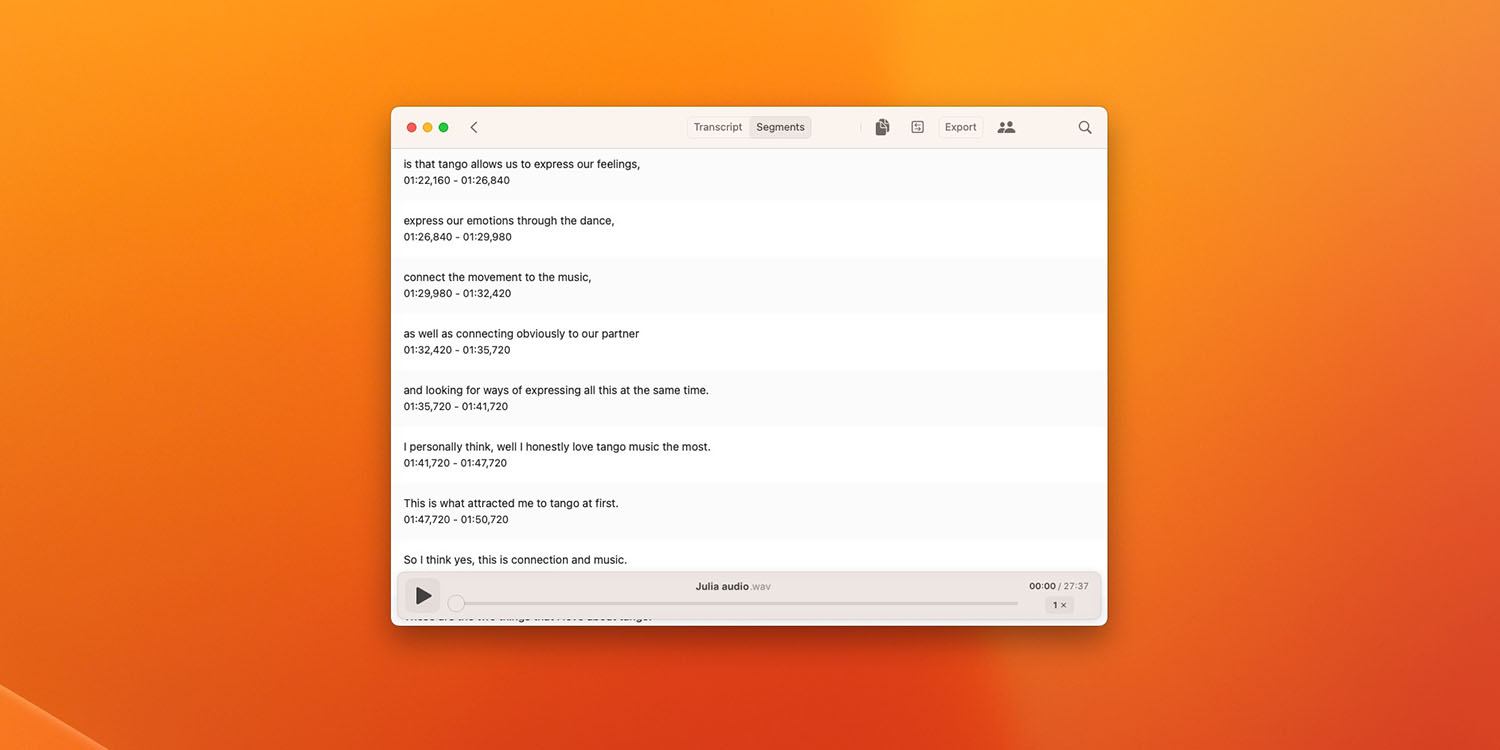
I love it when a piece written by one of my colleagues alerts me to an app which then turns out to be incredibly useful, which is exactly what happened when I read Filipe’s piece about MacWhisper audio transcription.
A combination of my belt-and-braces approach to filmmaking, and MacWhisper, saved the day when a video recording was almost ruined by some errant hair …
I’m currently working on a no-budget short documentary on Argentine tango, which features around a dozen people talking about why they dance, and how it has changed them as people.
The format is a mix of interview and dance footage, with the interviews shot in my apartment living room. Some of the interview will appear as to-camera, while most of it will be narrated over the dance footage.
For the audio, I’m using lavalier mics for the interviewees, with wireless transmitters sending the audio direct to the camera. But as a firm believer in a belt-and-braces approach, I also record a standalone audio track on a separate sound recorder.
There was a problem with the original audio in one of the interviews, which would have been an easy fix if it had been apparent right away. I could have simply discarded the camera audio, then used Final Cut Pro’s automatic sync feature to synchronize the separate audio track with the video, and edit from the compound clip.
But the problem was rather subtle, and I didn’t hear it until most of the edit was complete. The interviewee’s hair was sometimes hitting the mic clipped onto her blouse, creating these slight ‘clicking’ sounds. These were quiet enough that I hadn’t heard them during the edit, and I suspect most people wouldn’t even notice, but it was enough to bother me when later reviewing the footage.
At that point, it was too late to sync the separate audio file, as the edit had involved chopping up the interview into about a billion component pieces and using clips of around 20 seconds at a time from an interview of as many minutes.
What I needed to do was find the relevant audio in the 20-minute file. This would have been a very tedious process, especially as I’d in some cases used half a sentence from one section and combined it with half a sentence from another. (The interviewees did, of course, get to approve my edits, to ensure they were happy that I accurately conveyed their thoughts.)
But running the audio file though MacWhisper meant that, just 90 seconds later, I had a complete, time-stamped transcript. I could then search for a phrase used in the edit, and immediately jump to that part of the audio file to substitute it for the original. A few frame-level nudges saw the video and audio properly lip-synced. The whole process took just a few minutes. (Is it just me, by the way, or do other find it hard to work out whether the audio is ahead of the video, or vice-versa, when it’s out by only two or three frames?)
In any similar project in future, getting that transcript will be the first thing I do, as it would also have made it faster to identify the clips I wanted to use in the first place. If you work with audio or video, I highly recommend it. The free version did everything I needed, but I bought the Pro upgrade as a small thank-you to the developer.
MacWhisper audio transcription is available in both free and paid (one-off $25 purchase) versions.
FTC: We use income earning auto affiliate links. More.



Comments